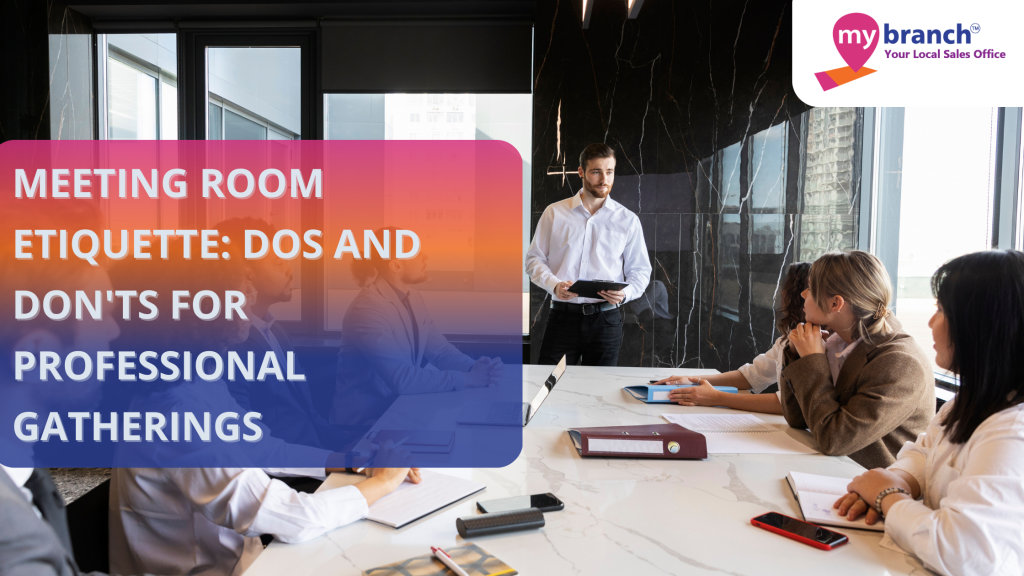
Meetings are the lifeblood of any successful business, providing a forum for collaboration, decision-making, and innovation. However, the effectiveness of a meeting can be greatly influenced by the environment in which it takes place. This is where the setup of the conference room plays a crucial role. A well-organized and thoughtfully designed conference room can not only enhance the productivity of meetings but also leave a lasting impression on attendees.
One of the key considerations when setting up a conference room is the availability of meeting rooms for rent. Renting a conference room can be a cost-effective solution for businesses that do not have dedicated meeting spaces or require additional space for special meetings or events. Meeting rooms for rent are typically equipped with all the necessary amenities, including audiovisual equipment, seating arrangements, and refreshments, making them an ideal choice for businesses looking to host professional meetings without the hassle of maintaining a dedicated meeting space.
In this article, we will explore top tips for setting up a conference room to ensure meetings run smoothly and efficiently.
Preparing the Conference Room
1. Cleanliness and Organization
– Start by ensuring that the conference room is clean and free of clutter. A tidy environment can help create a more professional atmosphere and improve focus.
2. Checking Equipment Functionality
– Test all audiovisual equipment, including projectors, screens, and microphones, to ensure they are working properly. This will help prevent any technical problems from arising during the meeting.
3. Setting Up Seating Arrangements
– Arrange seating in a way that promotes interaction and engagement. Consider the purpose of the meeting and the number of attendees when planning the seating layout.
Technology Setup
1. Ensuring Audiovisual Equipment is Functional
– Test audio and video equipment to ensure they are working properly. Make sure all cables are connected securely and that there are no issues with sound or picture quality.
2. Testing Video Conferencing Tools
– If you plan to conduct a virtual meeting, test the video conferencing software to ensure a smooth and uninterrupted connection. Make sure all participants know how to join the meeting.
3. Setting Up a Backup Plan for Technology Failures
-Have a contingency plan ready in case of technical difficulties. This could include having spare equipment on hand or an alternative method for conducting the meeting.
Room Layout and Design
1. Maximizing Natural Light and Ventilation
– Use natural light to create a bright and inviting atmosphere. Consider installing blinds or curtains to control the amount of light entering the room.
2. Choosing Ergonomic Furniture for Comfort
– Select comfortable chairs and tables that support good posture. This will help prevent fatigue and discomfort during long meetings.
3. Creating a Focal Point for the Room
– Create a focal point, such as a large screen or whiteboard, to draw attention and keep participants engaged. This can also help facilitate presentations and discussions.
Creating a Welcoming Atmosphere
1. Using Plants to Add Life and Color
– Incorporate plants into the conference room design to add a touch of nature and create a more inviting environment.
2. Incorporating Artwork or Décor
– Use artwork or décor that reflects the company’s values and culture. This can help create a more personalized and welcoming space.
3. Providing Refreshments for Attendees
– Offer refreshments such as water, coffee, or snacks to keep attendees comfortable and refreshed throughout the meeting.
Ensuring Accessibility
1. Providing Wheelchair Access
-Make sure that the conference room is accessible to people with disabilities.This includes providing ramps and wide doorways for wheelchair users.
2. Ensuring Adequate Lighting for Visually Impaired Individuals
– Use bright, even lighting to help visually impaired individuals navigate the room safely. Avoid harsh lighting that could cause glare or discomfort.
3. Providing Hearing Assistance for the Hearing Impaired
– If necessary, provide hearing assistance devices for attendees with hearing impairments. This can help ensure that everyone can fully participate in the meeting.
Managing Noise Levels
1. Using Sound-absorbing Materials
– Use carpets, drapes, and acoustic panels to help absorb sound and reduce noise levels in the conference room.
2. Implementing a Noise Control Policy
– Establish a noise control policy that encourages attendees to keep noise levels to a minimum. This can contribute to a more focused and productive atmosphere.
3. Providing Quiet Zones for Sensitive Discussions
– If possible, designate a quiet zone within the meeting rooms for sensitive discussions or private conversations.
Setting Up for Productivity
1. Providing Writing Materials and Stationery
– Ensure that the conference room is stocked with pens, notepads, and other stationery items for participants to use during the meeting.
2. Setting Up a Whiteboard or Flipchart for Visual Aids
– Use a whiteboard or flipchart to visually illustrate key points and ideas during the meeting. This can help keep participants engaged and focused.
3. Ensuring Adequate Power Outlets for Electronic Devices
– Provide ample power outlets for participants to charge their electronic devices. Consider providing extension cords or power strips to accommodate multiple devices.
Implementing Health and Safety Measures
1. Ensuring the Room Meets Fire Safety Regulations
– Check that the conference room meets all fire safety regulations, including having functioning smoke detectors and fire extinguishers.
2. Providing First Aid Kits
– Keep a first aid kit in the conference room in case of emergencies. Make sure all participants know where it is located.
In conclusion, setting up a conference room for meetings requires careful planning and attention to detail. By following the top conference room setup tips outlined in this article, you can create a productive and comfortable environment that enhances the overall meeting experience for all participants. From ensuring the cleanliness and organization of the room to implementing health and safety measures, each aspect of the conference room setup plays a crucial role in the success of your meetings.

